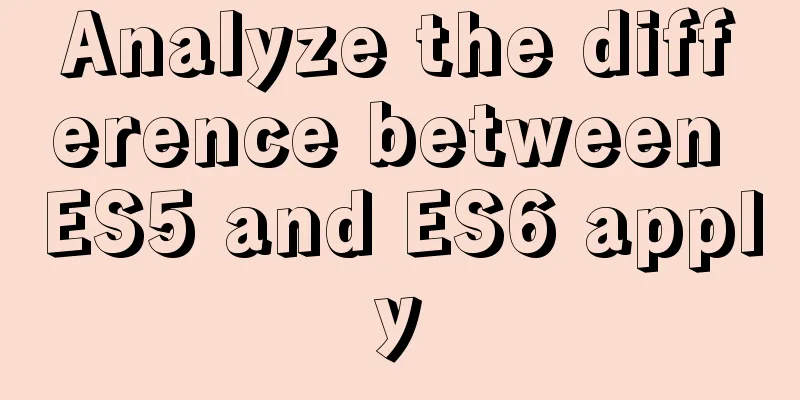Detailed explanation of the implementation principle of MySQL transactions and Spring isolation levels

|
1. Transactions have ACID characteristics
2. Transaction isolation level 1) Definition and issues of isolation level
2) If you view the modification and isolation level of MySQL show variables like 'tx_isolation'; # View the isolation level, before MySQL8show variables like 'transaction_isolation'; # View the isolation level, before MySQL8 set global transaction_isolation='READ-COMMITTED'; // Set the isolation level, valve domain READ-UNCOMMITTED, READ-COMMITTED, REPEATABLE-READ, SERIALIZABLE The transaction isolation level can be at the Session level. We can set different levels for different Sessions: set session transaction isolation level read uncommitted; set session transaction isolation level read committed; set session transaction isolation level repeatable read; set session transaction isolation level serializable; 3) Spring transaction isolation level Spring transactions use the database isolation level by default. You can adjust the Session isolation level by annotating the isolation parameter in @Transactional. The isolation level is at the session level, and the JDBC java.sql.Connection interface supports the setting of the isolation level.
When Spring starts a transaction (DataSourceTransactionManager.doBegin), it sets the isolation level of the Connection according to the annotation configuration:
MySQL driver com.mysql.cj.jdbc.ConnectionImpl executes SQL statements to adjust the session-level isolation level
3. Deadlock Deadlock occurs when two or more transactions occupy the same resource and request to lock the resources occupied by each other, resulting in a vicious cycle. Deadlock example: # Transaction 1 start transaction; update account set money=10 where id=1; update account set money=20 where id=2; commit; # Transaction 2 start transaction; update account set money=10 where id=2; update account set money=20 where id=1; commit; Suppose by chance, transaction 1 and transaction 2 finish executing the first update statement at the same time, and then prepare to execute the second update statement, but find that the record has been locked by the other party. Then the two transactions wait for the other party to release resources while holding the lock required by the other party, which will cause an infinite loop. To avoid deadlock problems, the database implements various deadlock detection and deadlock over-length mechanisms. InnoDB handles deadlock by rolling back the transaction that holds the least row-level exclusive lock. The above is the full content of this article. I hope it will be helpful for everyone’s study. I also hope that everyone will support 123WORDPRESS.COM. You may also be interested in:
|
<<: Xftp download and installation tutorial (graphic tutorial)
>>: Vue implements multiple selections in the bottom pop-up window
Recommend
Nginx reverse proxy forwards port 80 requests to 8080
Let's first understand a wave of concepts, wh...
Why does MySQL paging become slower and slower when using limit?
Table of contents 1. Test experiment 2. Performan...
Vue component to realize carousel animation
This article example shares the specific code of ...
Solve the scroll-view line break problem of WeChat applet
Today, when I was writing a small program, I used...
React non-parent-child component parameter passing example code
React is a JAVASCRIPT library for building user i...
Use native js to simulate the scrolling effect of live bullet screen
Table of contents 1. Basic principles 2. Specific...
How to find and delete duplicate rows in MySQL
Table of contents 1. How to find duplicate rows 2...
MySQL whole table encryption solution keyring_file detailed explanation
illustrate MySql Community Edition supports table...
How to configure MySQL on Ubuntu 16.04 server and enable remote connection
background I am learning nodejs recently, and I r...
Detailed explanation of the seven data types in JavaScript
Table of contents Preface: Detailed introduction:...
Problems and solutions when replacing Oracle with MySQL
Table of contents Migration Tools Application tra...
Vuex implements simple shopping cart function
This article example shares the specific code of ...
Solution to the problem of invalid line-height setting in CSS
About the invalid line-height setting in CSS Let&...
MySql grouping and randomly getting one piece of data from each group
Idea: Just sort randomly first and then group. 1....
MySQL incremental backup and breakpoint recovery script example
Introduction Incremental backup means that after ...












